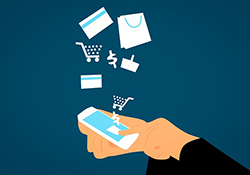 With a virtual payment terminal, you can take payments over the internet. Not only will you boost sales, but you’ll also offer convenience to your customers. Your virtual payment terminal may be vulnerable to security risks, though, so follow several tips as you reduce liability and protect your customers and business.
With a virtual payment terminal, you can take payments over the internet. Not only will you boost sales, but you’ll also offer convenience to your customers. Your virtual payment terminal may be vulnerable to security risks, though, so follow several tips as you reduce liability and protect your customers and business.
What is a Virtual Payment Terminal?
Your virtual payment terminal allows you to accept credit card payments without using a credit card terminal. Simply log into the virtual terminal website from your device, enter the sales amount and key in the credit card information. You’ll then receive authorization if the sale is approved and can print or email the receipt.
After each sale or when it’s convenient for you, check the transaction history to see details about your sales and processing activity. The terminal also includes performance data and financial reports, and you can adjust the admin settings.
With your virtual payment terminal, you can accept payments anywhere. You’ll also save money with lower processing fees and increased opportunities to make sales.
Security Tips for Your Virtual Payment Terminal
Your virtual payment terminal offers convenience and can boost sales, but you must secure it. You will be liable if your actions compromise a customer’s credit card number or if fraud occurs to your account.
- Never store customer payment information. Use credit card data to make the sale, but never make or store a copy of the card number or other details.
- Use a PCI-compliant virtual payment terminal provider.
- Utilize fraud filters that identify potential fraud and help you respond properly.
- Partner with a provider that uses Point-to-Point encryption.
- Implement tokenization. It replaces data with a token and inhibits hackers.
- Avoid public Wi-Fi connections that are often unsecure.
- Follow all the security protocols mandated by your virtual payment terminal provider. These protocols may include annual PCI compliance training or software updates as you protect your customers’ data and company.
- Limit login access. Only authorized employees should be able to log into your virtual payment terminal as you prevent unauthorized transactions or other information compromises.
- Log out after each transaction or when you need to walk away from your device. This step prevents someone from accessing the terminal and information between sales.
- Secure the computers, smartphones and tablets you use to access your virtual payment terminal. If possible, use devices that require a pin or use fingerprint or face recognition, and store these devices in a secure location.
Your business benefits from a virtual payment terminal. Secure it as you limit your liability and protect customers and your company.





